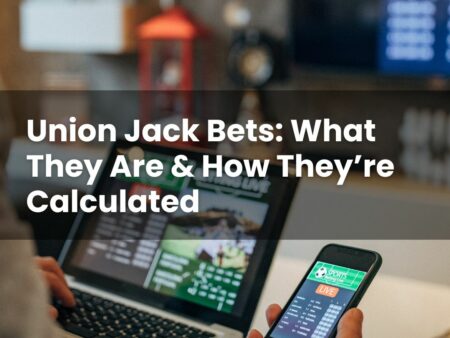For many, betting on sports may feel complicated at first, especially when terms like “1×2” appear on betting slips and websites. It is one of several ways to speculate on match outcomes, and it is commonly linked with football.
This blog post looks at the 1×2 market, how it might operate in football, how prices are set, and where else you may come across it, with practical examples along the way.
Read on to gain a clearer understanding.
Brief Introduction To 1×2 Betting
1×2 betting is widely seen as a straightforward method for predicting match outcomes. The term itself hints at three possible results in a standard match: a home team outcome, a draw, or an away team outcome.
The labels “1”, “X” and “2” are shorthand for these possibilities. At first, you may think of it simply as choosing which side might finish ahead or whether neither side will. Many people begin with this approach because it avoids getting into precise scores or individual player contributions, instead keeping the focus on the overall match result.
It is particularly common in league matches or cup ties decided at the end of regular play.
What Does 1×2 Betting Mean?
As mentioned, the 1×2 market is linked to events with three results at the end of normal play: a home side win, a draw, or an away side win. In practical terms, placing a 1×2 bet means selecting one of these outcomes in advance.
The market is sometimes labelled “Full Time Result” or “Match Result.” It is settled on the score at the end of standard play, which keeps the approach straightforward.
Once you understand the basic choices, it may become easier to see how this works specifically in football.
How Do 1×2 Bets Work In Football Matches?
In football, a 1×2 bet focuses on the score after 90 minutes plus any added injury time. Extra time and penalties are not considered unless a market explicitly states otherwise, sometimes marked as “90 minutes only” on certain websites.
The three options are backing the home side (“1”), predicting a draw (“X”), or selecting the away side (“2”). The bet is finalised when the regular time whistle blows.
For instance, if someone chooses “X” and the match ends 2‑2, that choice would be counted as successful. If a cup tie finishes 1‑1 after normal time but later sees a winner in extra time, the draw selection in a standard 1×2 bet would still stand as the relevant outcome.
Knowing how the outcome is determined may help when looking at the prices offered for each option.
How Are Odds Calculated For 1×2 Bets?
Odds reflect how likely each outcome is judged to be. Bookmakers consider factors such as team quality, recent performance, injuries, venue, scheduling, and historical head-to-head results to set prices.
Shorter odds suggest one outcome is more probable than others; longer odds imply a lower probability. For example, if a strong side hosts a weaker opponent, the home win price is often shorter than the away win price.
Prices also include a built-in margin for the bookmaker. To see this, decimal odds may be converted to implied probabilities: 1.80 equates to roughly 56 percent, 3.80 around 26 percent, and 4.60 near 22 percent. Adding them together exceeds 100 percent, which accounts for that margin.
This approach applies wherever 1×2 markets are offered, so the same method may be expected outside football, too.
Can 1×2 Betting Be Used In Other Sports?
Although football is the most common setting, similar three-way markets appear in other sports that may finish level in standard play. Ice hockey sometimes offers a “3-way” or “regulation time” market with home, draw, or away options. Sports such as rugby league or handball may also have draws as valid outcomes in regular time.
In contrast, sports like tennis or basketball, where draws do not occur, usually feature two-way selections, such as match winner instead.
If you are exploring multiple sports, you might want to check how the market is defined—whether it covers only normal periods or includes extra time.
Examples Of 1×2 Bets In Real Matches
To make the 1×2 market more tangible, here are some illustrative football examples.
Suppose a Premier League fixture features Manchester United at home against Arsenal. Options might be:
- “1” for Manchester United to finish ahead
- “X” for the match to end level
- “2” for Arsenal to finish ahead
If the match ends 2‑1 to Manchester United, any choice of “1” would be successful. Those who selected “X” or “2” would not.
In another case, Chelsea facing Liverpool ends 0‑0. Only those who chose “X” would match the outcome, while selections of “1” (Chelsea) or “2” (Liverpool) would not.
These examples highlight that 1×2 boils down to one simple decision on the full-time result.
If you choose to place a bet, keep your activities within reasonable limits and consult support resources if needed. Remember that betting should remain a form of entertainment and not a way to make money.
If you feel your activity is affecting other areas of your life, seek help promptly from official support services. Tools such as deposit limits, self-exclusion, and time reminders may help you stay aware of your betting activity.








